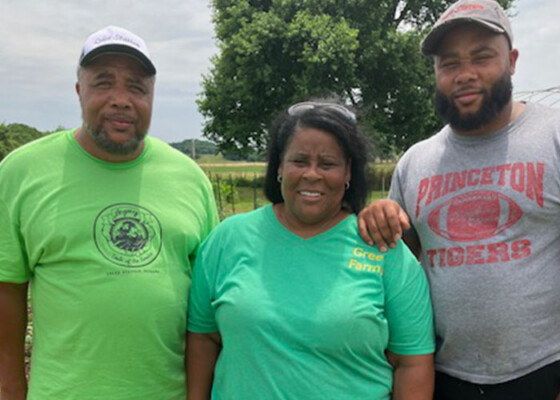Indiana’s Father of Forestry
October 11, 2016In the summer of 1881, typhoid fever swept through small town Bluffton, Indiana. Sixteen year-old Charles Deam was one of the many Wells County residents who caught the disease. Deam…
In the summer of 1881, typhoid fever swept through small town Bluffton, Indiana. Sixteen year-old Charles Deam was one of the many Wells County residents who caught the disease. Deam survived after drinking an old pioneer remedy, milk boiled with Old-Field Balsam, a wild herb. This incident marked the first chapter in Deam’s dedication to studying and promoting Indiana’s plant-life as a botanist, state forester, and author.
Charles Deam was born on August 30, 1865 in Bluffton, Indiana. He lived on a typical pioneer farm and eventually opened his own drugstore in Bluffton. The job required Deam to work over 80 hours per week. To deal with the stress, a doctor advised Deam to walk through the countryside each day. Deam’s incredible work ethic refused to let him take leisurely strolls. Instead, Deam and his wife, Stella began collecting samples of plants they found.
Deam’s curiosity about Indiana plants grew. One day, Deam and Stella discovered an unusual looking plant and brought it to Bruce Williamson, his neighbor and student of zoology, to identify. Bruce handed over a copy of Gray’s Manual of Botany and Deam used the key to uncover the plant’s identity, a moth mullein.
From then on Deam was hooked and learned everything he could about botany. Eventually Deam collected more than 73,000 specimens. He trekked across the state in his retrofitted Ford Model T, christened the “weed wagon,” and meticulously collected and cataloged specimens from every Indiana township. It was more than a collecting quest, however. Deam realized studying plants over time empowered him to uncover changes in the natural landscape. Science students today can still study his unmatched collection housed at Indiana University-Bloomington.
Deam began to publish his findings for The Indiana Academy of Science. His renown as a dedicated botanist led to his appointment as the first state forester in 1909. Deam led Indiana’s reforestation process, created standards to keep the state’s private forests intact, and worked hard to educate Hoosiers about the value of the state’s forests.
When Deam wanted to retire in 1928, the state wouldn’t let him. Instead, they hired him as a “research forester” so he could be paid to continue cataloging the natural history of Indiana. He wrote four books, Trees of Indiana (1912), Shrubs of Indiana (1924), Grasses of Indiana (1929), and Flora of Indiana (1940). Each book contained biological keys for identification, charts, and lots of scientific data. However, Deam’s unique writing style, honed from writing the witty Deam’s Almanac for his drugstore customers, expanded his readership beyond scientists. His first book, Trees of Indiana, was so popular that thousands of requests for the book went unfulfilled after the state depleted its original 10,000 copies. Over the next four decades this book was reprinted, revised regularly, and became a key text for Midwestern forestry students and tree lovers.
Today, Deam’s legacy lives on. A tree, a lake, a national wilderness area, and 48 small plants are named after him. Even though Deam wrote modestly in 1946, “I am just plain Charley Deam and I never want anyone to think anything else,” he clearly helped Hoosiers realize the importance of their forests and flora, and ensured it would be studied for generations to come.
————————————————-
Next Indiana Campfires is a unique way to connect nature, literature and Indiana’s Bicentennial. The program is supported by the Efroymson Family Fund, the Nina Mason Pulliam Charitable Trust and Pulitzer Prizes Centennial Campfires. Indiana Humanities is supported in part by Lilly Endowment Inc. and the National Endowment of the Humanities.
This post, written by Annette Scherber, is part of the weekly blog series devoted to the initiative. Scherber is an intern at the Indiana Historical Bureau. Check back every Tuesday to learn more about Indiana’s great environmental literature, find out interesting facts about Hoosier stewardship, get all the latest program details and more.


